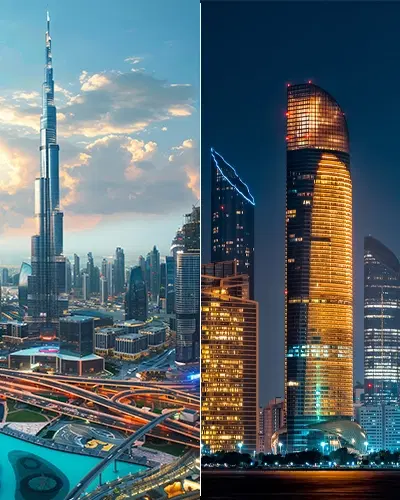1. Tough to get a job in Dubai
It is not easy to find a job in Dubai. For example, in the US, most of the jobs, like almost 40% to 50% of the jobs, are received through referrals, but in India, that referral system is kind of getting built. Referral means getting a job in a company through the recommendation or reference given by a person. This is more prominent in Western culture.
In the Middle East, there is a lot of demand for jobs because of the tax-free nature, leading to increased competition for jobs. Almost 70% of the jobs are through networking. Getting a job in Dubai is very challenging, but if you focus your energy in terms of cultivating your network by attending networking events, it is difficult to find a job in Dubai, but not impossible.
- The type of job to look for in Dubai?
Ideally, you should look at a salary range of at least AED 10,000. To live a good life, according to the data statistics, the monthly average salary is between AED 13,000 and AED 15,000, and this is the starting range. So, if you can get such jobs, then it can put you ahead in terms of your wealth-building journey.
- Which industries offer such jobs in Dubai?
- Blockchain
- Artificial Intelligence
- Machine Learning
- Also, in startups, you can get such kinds of jobs more easily than in big companies.
- Can an Indian get a job in Dubai?
An Indian can get a job, though it is difficult, but if you network well and primarily take a networking-based approach, then the odds of you finding a job can increase significantly. Also, a lot depends on your background profile.
2. Expenses in Dubai
In Dubai, rent is the biggest expense that one needs to bear. The rent will be at least around AED 120,000 a year, and the average total expenses would be around AED 200,000 a year.
3. Net savings
Combined income of a couple = AED 15,000 + AED 15,000
= AED 30,000
Therefore, Combined income in a year = AED 360,000
Total expenses = AED 200,000
Hence, Total savings = AED 160,000 or approximately Rs 36 lakhs
4. Investing
- In India, if we are investing money:
Amount invested = Rs 30 lakhs
Then, over time, that amount will become = Rs 50 lakhs
Value of Profit =Rs 20 lakhs
Capital Gains Tax = 12.5% on Rs 20 lakhs
Amount invested = Rs 30 lakhs
Increase in Value over time = Rs 50 lakhs
Value of Profit = Rs 20 lakhs
Tax = 0%
Imagine the amount of money one can earn if he/she keep on investing in this manner for a period of let’s say 20 or 30 years.
5. Safety and Quality of Life
Dubai is one of the safest cities to live in. You can easily board a cab even in the middle of the night. The city is famous for being one of the safest cities, especially for women. Several reports have showcased that the crime rate in Dubai is very low compared to many Western countries. If we take the example of India only, the country has shown alarmingly high crime rates in recent times, especially against women. In addition, in metropolitan cities such as Delhi, the crime rates are very high, and it is not safe, especially at night.
6. Opportunities in Dubai
Dubai is a good and business-friendly location. For international investors, the city is a pool of opportunities as long as they are law-abiding and work properly, sincerely, and honestly, and add value to their economy. Dubai offers a good and stable investor-friendly climate, and one of the reasons for that is the number of expatriate population. Almost 40% to 50% of the UAE's population comprises Indians. In the next 15 or 20 years, the world will be very different, focusing on artificial intelligence, machine learning, or some variant of it, having that ecosystem where one can attend workshops, events, and schools, adding to the practical exposure opportunities.
7. Weather in Dubai
Dubai, as a land of deserts, experiences scorching heat most of the time during the year, especially from June to September, when the weather is extremely hot and humid. Not everyone is cut out to live in this kind of weather. However, during the year-end months from December to February, the temperature is very mild and pleasant. The city experiences little to no rainfall with an average annual rainfall of around 100 mm, mostly between December and March.






